When you buy through our links, we may earn a commission. Products or services may be offered by an affiliated entity. Learn more.
Getting a good night’s sleep is crucial for your and your baby’s health. But between nausea, heartburn, backache, anxiety, and night sweats, pregnancy can make it difficult to sleep. The right mattress can have an enormous impact on the quality of your sleep. More than ever, you’ll need a mattress that relieves pressure from sensitive areas while providing support for your growing baby bump.
- The Luxury Firm WinkBed is our top pick for expecting moms. It has gentle, adaptive contouring that our Test Lab found to minimize impact and pressure.
- We’re here to help you find the best mattress for pregnancy, going through the factors you should focus on in a mattress and sharing our top picks for mattresses on the market today.
- Want a quick rundown? Check out our 1-minute video reviews of the best mattresses during pregnancy.
Our Top Picks
-
Best Overall – Luxury Firm WinkBed
View Details
-
Most Comfortable – Helix Midnight
View Details
-
Best Value – Brooklyn Bedding CopperFlex Memory Foam
View Details
-
Best for Side Sleepers – Nolah Evolution 15
View Details
-
Best for Back Pain – Bear Elite Hybrid
View Details
-
Best Cooling – Brooklyn Bedding Aurora Luxe
View Details
-
Best Luxury – Birch Luxe
View Details
Swipe for more
Best Overall
Luxury Firm WinkBed
9.5 /10
Test Lab Score
Get $300 off all mattresses at Winkbeds
Get $300 off all mattresses at Winkbeds
If comfortable cushioning and strong support are what you’re after, the Luxury Firm WinkBed is a worthy choice. It has a zoned support system that boosts pushback beneath the midsection and lower back to prevent the spine from curving or sinking into the mattress – an excellent feature for pregnancy.
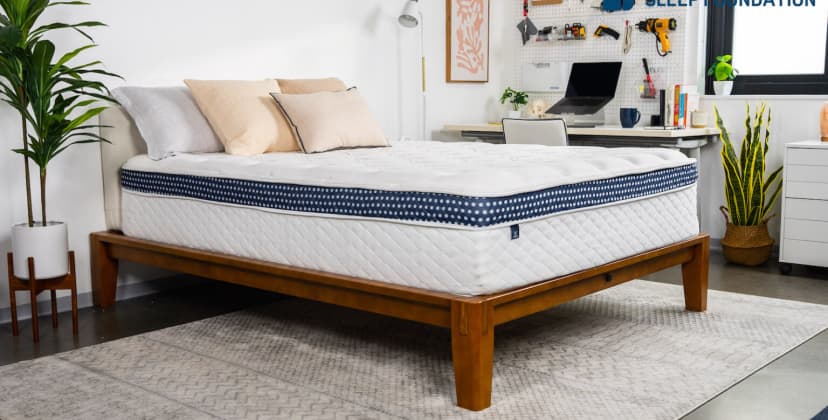
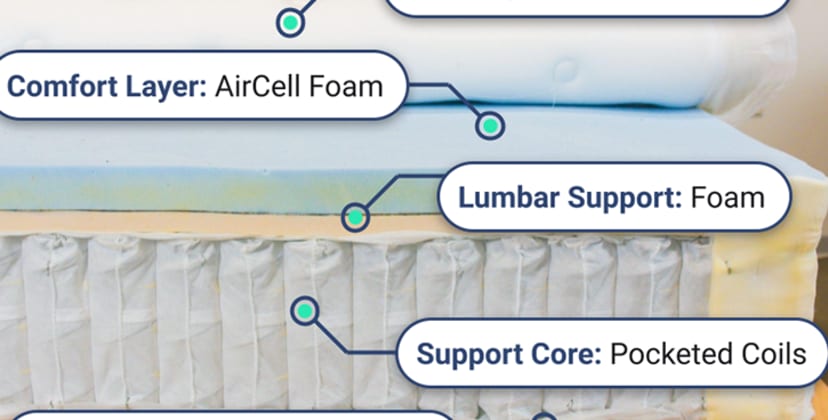
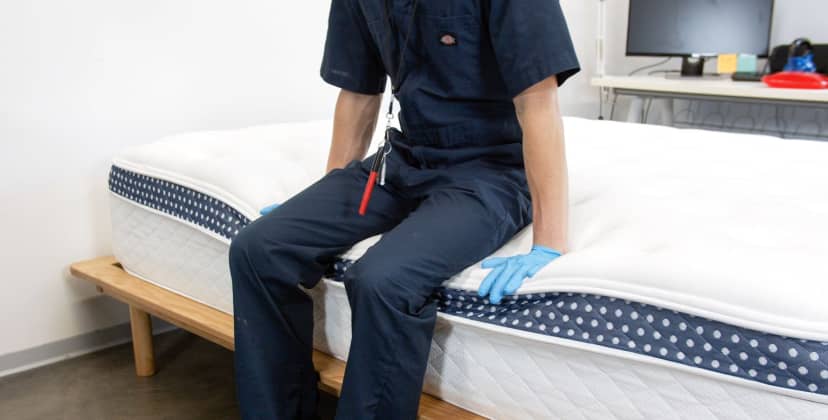
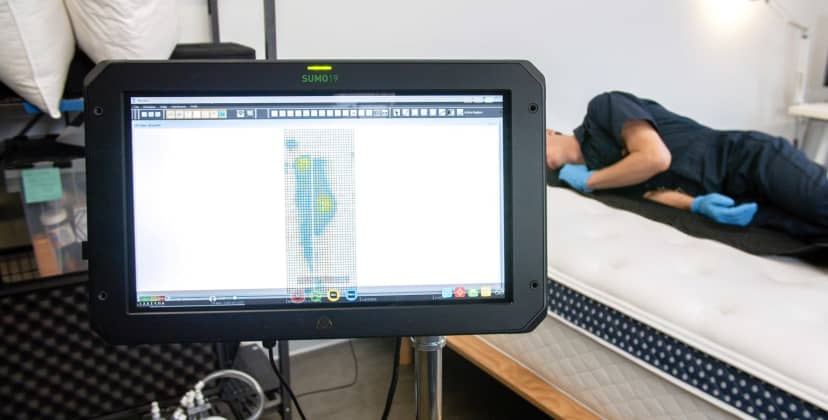
Credit: Sleep Foundation Test Lab
Price
$2,570
Mattress Type
Innerspring
Firmness Options
Medium Firm (6)
Trial Period
120 nights (30 night requirement)
At a Glance
- Who It’s Best For: Back and side sleepers, as well as stomach sleepers between 130 and 230 pounds.
- Feel: Medium firm (6) Balanced: plenty of cushioning but not so soft that testers felt they were sinking or “bottoming out.”
- What It’s Made Of: Dual-layer Euro-top with gel-infused polyfoam. There’s an additional polyfoam transitional layer, then a support core made from pocketed coils, separated into five zones.
- What We Don’t Like: Transfers motion.
Scoring & Reviews
The following ratings show how suitable this mattress is for different sleeping positions and sleeper weights. These scores are determined by how well the mattress supports and relieves pressure for each sleeper type.
We performed a meta-analysis on 8573 validated customer reviews of the Winkbed. This is what people who bought the mattress had to say:- Quality of Materials: The mattress is frequently described as well-made, with durable materials that contribute to a good night’s sleep.
- Cooling Features: Some reviewers mention that the mattress does a good job of regulating temperature, providing a cooler sleep experience.
- Edge Support: While generally satisfied with the support, a few reviewers note that edge support could be better.
- Comfort and Support: Many reviewers praise the mattress for its comfort and support, often mentioning relief from back pain and improved sleep quality.
- Firmness Options: Customers appreciate the variety of firmness options available, finding the right balance for their personal preferences.
- Value for Money: Many users feel the mattress is worth the investment, offering good value for the quality and comfort provided.
- Made in the USA: Buyers are pleased that the mattresses are made in the USA, supporting domestic manufacturing.
Most Comfortable
Helix Midnight
9.1 /10
Test Lab Score
27% off sitewide with code: SF27
27% off sitewide with code: SF27
The Helix Midnight may have been crafted with side sleepers in mind, but it’s also an excellent fit for pregnant people — side sleepers or otherwise. It’s got plenty of cushioning and pressure relief, thanks to its memory foam and polyfoam comfort system. It’s also quite affordably priced, especially considering its materials and high-quality construction.
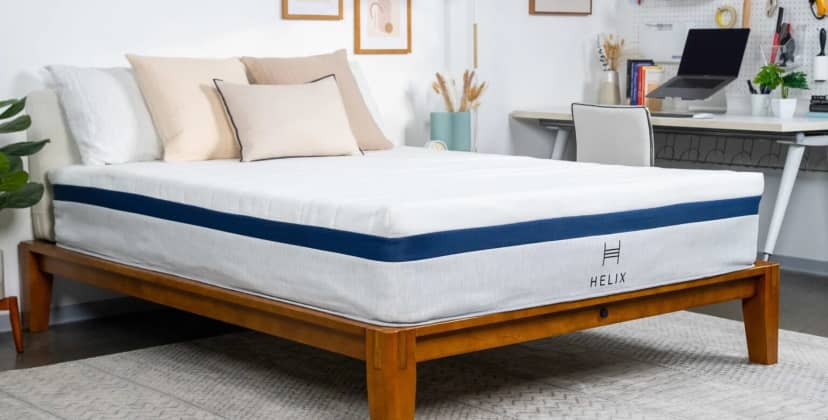
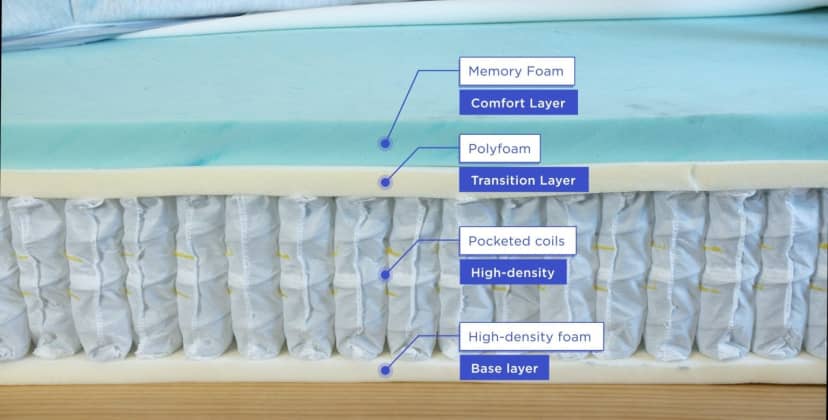
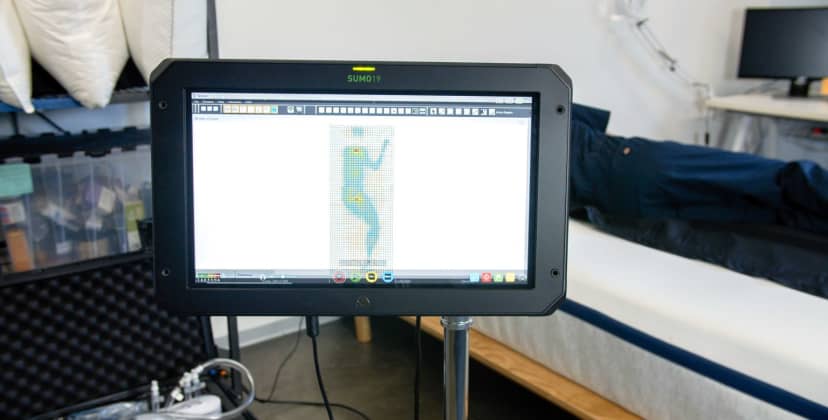
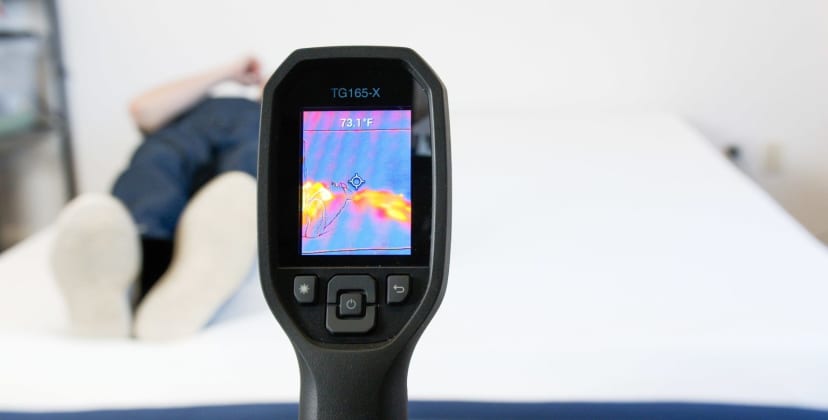
Credit: Sleep Foundation Test Lab
Price
$1,099
Mattress Type
Hybrid
Firmness Options
Medium Firm (6)
Trial Period
120 nights (30-night requirement)
At a Glance
- Who It’s Best For: Side sleepers, as well as back and stomach sleepers, especially those between 130 and 230 pounds.
- Feel: Matches your body’s shape to absorb impact and help evenly distribute your weight without compressing too deeply.
- What It’s Made Of: Comfort system has memory foam and polyfoam layers. An additional polyfoam layer creates a transition between the upper layers and the pocketed coil support core. Base layer is polyfoam.
- What We Don’t Like: Lacks edge support.
Scoring & Reviews
The following ratings show how suitable this mattress is for different sleeping positions and sleeper weights. These scores are determined by how well the mattress supports and relieves pressure for each sleeper type.
We performed a meta-analysis on 6653 validated customer reviews of the Helix Midnight. This is what people who bought the mattress had to say:
- Comfort and Firmness: Most reviewers praised the mattress for its medium-firm feel, which strikes a balance between support and plushness. Side sleepers in particular reported enhanced comfort due to effective cradling of pressure points.
- Heat Regulation: While many found the mattress sufficiently cool, some customers noted slight heat retention, which is typical for mattresses with foam comfort layers.
- Pain Relief: A standout theme was relief from back, hip, and shoulder pain. Customers with chronic pain or those who sleep on their sides frequently noted a reduction in discomfort.
- Durability Concerns: A minority of reviewers reported early signs of sagging or indentations, raising concerns about long-term durability.
- Sleep Quality: Numerous customers mentioned improved sleep quality, citing deeper, uninterrupted rest as a key benefit.
- Edge Support: Reviews indicated mixed opinions, but the mattress generally supports weight well at the edges, aligning with what hybrid beds typically offer.
Best Value
Brooklyn Bedding CopperFlex Memory Foam
8.6 /10
Test Lab Score
30% off sitewide with code: BFRIDAY30
30% off sitewide with code: BFRIDAY30
The CopperFlex Memory Foam from Brooklyn Bedding offers high quality and strong performance at a budget-friendly price. Composed of six individual foam layers, the mattress feels plush and adaptive on the surface to alleviate sore sports, but a strong and multi-zoned support system helps ensure you won’t sink too deeply.

Credit: Sleep Foundation Test Lab
Price
$466
Mattress Type
Foam
Firmness Options
Medium Firm (6)
Trial Period
120 nights (30-night requirement)
At a Glance
- Who It’s Best For: Side sleepers over 130 pounds, as well as hot sleepers.
- Feel: Medium firm (6). Conforms closely to your body, creating a cradle for your unique curves and contours, while keeping you on an even plane.
- What It’s Made Of: Top polyfoam layer sewn to the cover, two memory foam layers for extra cushioning, and zoned transitional foam. Two high-density foam layers make up the support core, and the cover is made from GlacioTex cooling fabric.
- What We Don’t Like: Strong off-gassing odor for up to 72 hours after unboxing. Too soft for back and stomach sleepers over 230 pounds.
Scoring Breakdown
The following ratings show how suitable this mattress is for different sleeping positions and sleeper weights. These scores are determined by how well the mattress supports and relieves pressure for each sleeper type.
We performed a meta-analysis on 549 validated customer reviews of the Brooklyn Bedding CopperFlex Memory Foam. This is what people who bought the mattress had to say:- Pricing and Value: Many reviewers have highlighted that the mattress is affordable and offers great value for the price, making it an excellent choice for budget-conscious shoppers.
- Heat Regulation: Several users noted that the mattress does not retain much heat, which contributes to a cooler and more comfortable sleep, especially for those who tend to sleep hot.
- Edge Support: The mattress is reported to have good edge support, which is beneficial for those who use the edge of the bed frequently or sleep close to the sides.
- Odor and Off-Gassing: Some reviews mention that the mattress has minimal off-gassing odor upon unpacking, which is a common concern with new mattresses. The smell will dissipate in a few days.
- Hybrid Option: The availability of hybrid models is appreciated, particularly for those needing more support, such as individuals with larger frames.
- Customer Service: Positive remarks about customer service suggest that the company handles queries and issues effectively.
Best for Side Sleepers
Nolah Evolution 15
9.2 /10
Test Lab Score
35% off sitewide + extra $100 off with code: SF100
35% off sitewide + extra $100 off with code: SF100
Side sleepers typically like a mattress that evenly distributes body weight while cradling their hips and shoulders to prevent pressure points from developing. The Nolah Evolution 15 has a thick foam comfort system that provides deep cushioning and a plush, luxe feel. You can buy it in three firmness levels, all of which got high marks from our side sleepers.
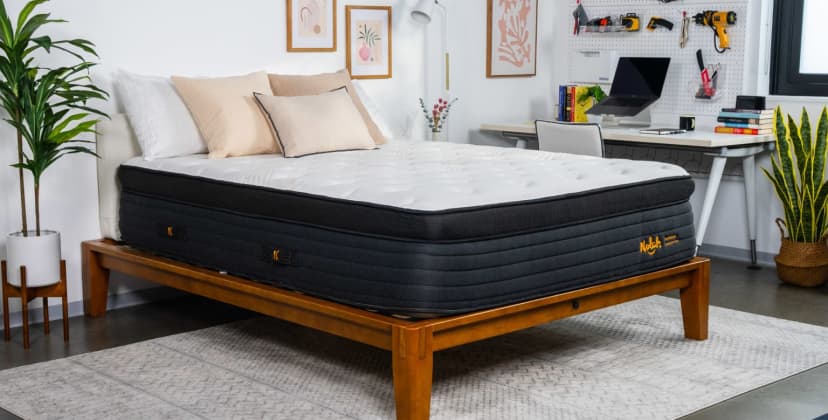
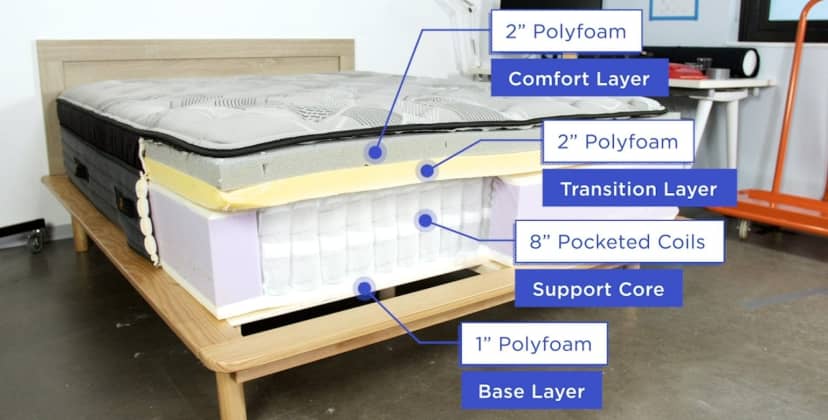
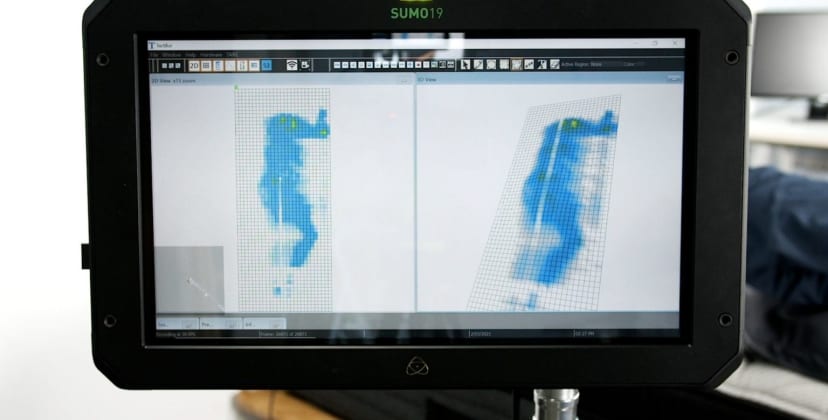
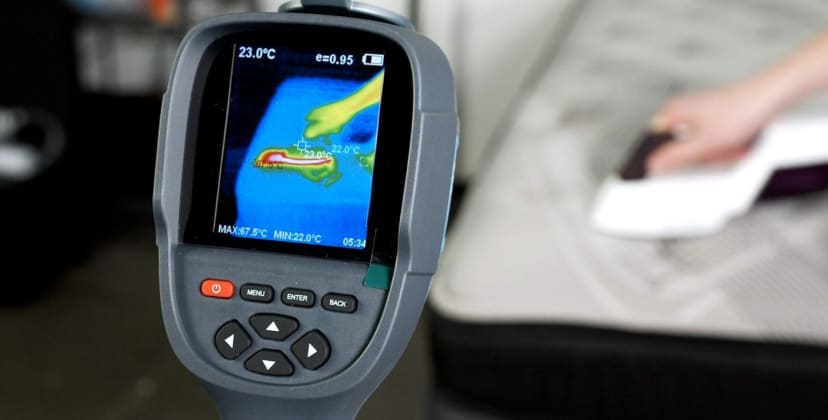
Credit: Sleep Foundation Test Lab
Price
$1,624
Mattress Type
Hybrid
Firmness Options
Medium (5), Medium Firm (6), Firm (8)
Trial Period
120 nights (30-night requirement), $99 return pickup fee
At a Glance
- Who It’s Best For: Stomach, back, and side sleepers, as well as hot sleepers.
- Feel: Surface is soft and plush. It cushions the body well without feeling like you’re sinking.
- What It’s Made Of: Seven inches of polyfoam separated into four layers that each have a distinct purpose and goal. They rest on top of an 8-inch pocketed coil support core that’s split into zones to offer different levels of pushback. A plant-based fiber pad acts as a base.
- What We Don’t Like: Transfers motion.
Scoring & Reviews
The following ratings show how suitable this mattress is for different sleeping positions and sleeper weights. These scores are determined by how well the mattress supports and relieves pressure for each sleeper type.
We performed a meta-analysis on 897 validated customer reviews of the Nolah Evolution 15. This is what people who bought the mattress had to say:- Motion Isolation: Couples note the excellent motion isolation, which minimizes disruptions from partner movements during the night.
- Edge Support: The edge support of the mattress is frequently highlighted, with many finding it adequate for sitting or sleeping near the edge without feeling like they will roll off.
- Softness: Many reviewers discuss the softness of the mattress. Some find it too soft, causing discomfort, especially for heavier individuals, while others appreciate the plushness.
- Pressure Relief and Support: Reviewers frequently highlight relief from back and shoulder pain, attributing this to the supportive foam layers and zoned coil system.
- Heat Retention: A few reviewers note that the mattress retains heat, making it uncomfortable for some, particularly in warmer climates or for those who sleep hot.
- Durability and Quality: Users often comment on the high quality and durability of the mattress, noting that it maintains its shape and comfort over time.
Best for Back Pain
Bear Elite Hybrid
8.5 /10
Test Lab Score
40% sitewide with code: SF40
40% sitewide with code: SF40
The Bear Elite Hybrid does a lot of things well – it keeps you cool, supports your spine, and alleviates pressure point discomfort. It’s a crowd-pleasing model that comes in three firmness options that all are designed to provide optimal spinal alignment. It’s also priced pretty competitively compared to other luxury hybrids.
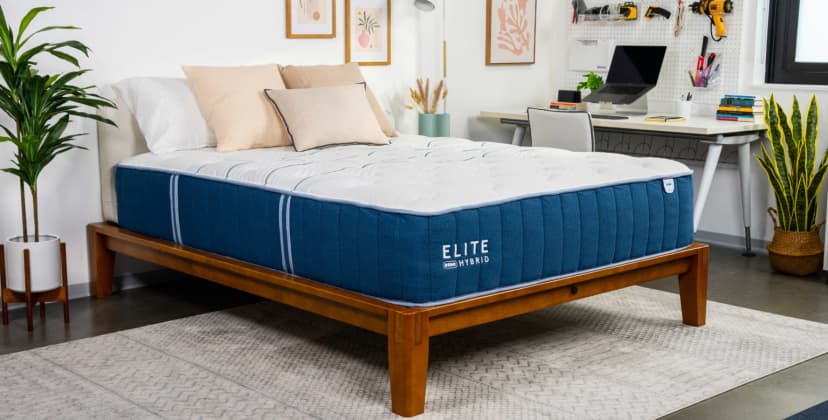
Credit: Sleep Foundation Test Lab
Price
$1,499
Mattress Type
Hybrid
Firmness Options
Medium (5), Medium Firm (6), Firm (8)
Trial Period
120 nights (30-night break-in period)
At a Glance
- Who It’s Best For: Side and back sleepers, as well as hot sleepers.
- Feel: Adapts to your body’s shape, helping to cushion sore areas while evenly distributing weight. Supports lower back and midsection.
- What It’s Made Of: Quilted cover with cooling phase change material. The comfort system has layers of copper-infused memory foam and zoned polyfoam. The pocketed coil support core rests on top of an additional high-density polyfoam stability layer.
- What We Don’t Like: Too compressive for stomach sleepers.
Scoring & Reviews
The following ratings show how suitable this mattress is for different sleeping positions and sleeper weights. These scores are determined by how well the mattress supports and relieves pressure for each sleeper type.
We performed a meta-analysis on 3703 validated customer reviews of the Bear Elite Hybrid. This is what people who bought the mattress had to say:- Comfort and Support: Many reviewers highlight the mattress’s balance of comfort and support, often mentioning relief from back pain and improved sleep quality.
- Firmness Options: Customers appreciate the various firmness options, with some opting for firmer versions after experiencing discomfort with medium firmness.
- Temperature Regulation: Several reviews note the mattress’s ability to stay cool, which enhances sleep quality, especially in hot weather.
- Size and Upgrade Options: Customers are pleased with the availability of different sizes and the option to upgrade, which provides flexibility for different needs and preferences.
- Quality of Additional Products: Positive remarks on the quality of accompanying products like pillows and sheets, which are often included as free additions.
- Motion Isolation: Many reviewers highlight the mattress’s excellent motion isolation, making it ideal for shared sleeping arrangements.
Best Mattress + Adjustable Base Combo
Puffy Cloud Smart Bed Set
8.5 /10
Test Lab Score
$750 off + free accessories at Puffy
$750 off + free accessories at Puffy
This combo set from Puffy makes overhauling your bed easy and affordable. With the bundle, you’ll get a medium (5) all-foam mattress, adjustable bed base, mattress protector, pillows, and a sheet set. Features like zero-gravity adjustment, zoned massage, and USB port charging give this bed base an advantage over traditional frames.
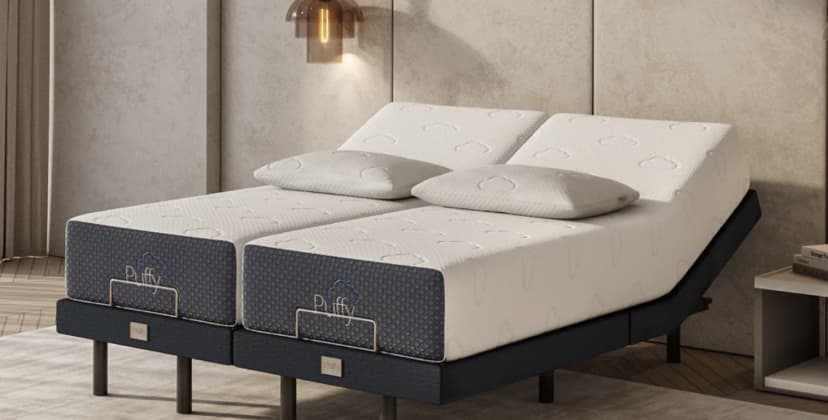
Price
$2,148
Mattress Type
Foam
Firmness Options
Medium (5)
Trial Period
101 Nights
At a Glance
- Who It’s Best For: Side and back sleepers, as well as couples.
- Feel: Medium (5). Adaptive, body-hugging, and excellent at preventing motion transfer. Has a zero-gravity mode.
- What It’s Made Of: Memory foam comfort layer, a polyfoam transitional layer, and a polyfoam support core.
- What We Don’t Like: Expensive. Too soft for most stomach sleepers.
Scoring Breakdown
The following ratings show how suitable this mattress is for different sleeping positions and sleeper weights. These scores are determined by how well the mattress supports and relieves pressure for each sleeper type.
Best Cooling
Brooklyn Bedding Aurora Luxe
9.2 /10
Test Lab Score
30% off sitewide with code: BFRIDAY30
30% off sitewide with code: BFRIDAY30
The Aurora Luxe has a classic hybrid feel that’s available in three firmness options as well as several hard-to-find dimensions. It’s responsive without being excessively bouncy, which is a tough balance to create and one that’s hard to find. It has plenty of structure to keep your spine aligned and it’s packed with cooling features that proved their worth during our tests.
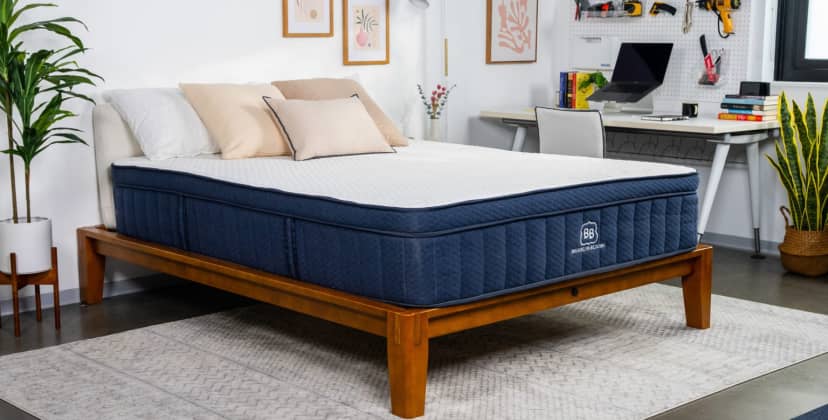

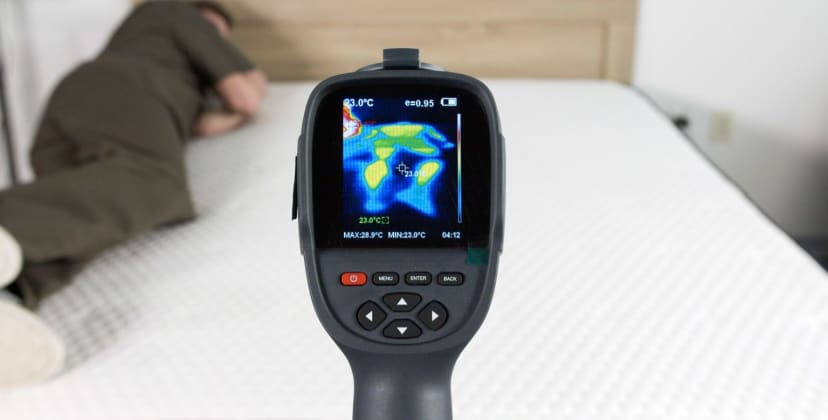
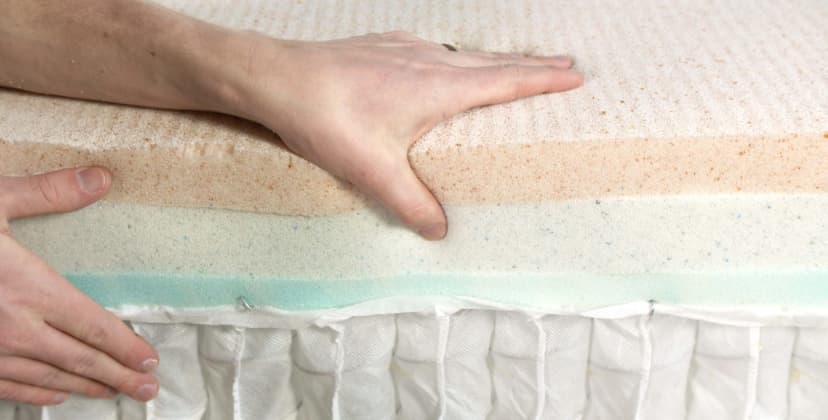
Credit: Sleep Foundation Test Lab
Price
$1,586
Mattress Type
Hybrid
Firmness Options
Medium Soft (4), Medium Firm (6), Firm (7)
Trial Period
120 nights (30-night requirement)
At a Glance
- Who It’s Best For: Back and side sleepers (medium soft and medium).
- Feel: Plush while supporting the spine. Doesn’t retain heat.
- What It’s Made Of: Three layers in the comfort system: two of polyfoam and one of memory foam, infused with gel and copper. The pocketed coil support core has three zones with different levels of pushback. Base layer is high-density polyfoam.
- What We Don’t Like: Not supportive enough for sleepers over 230 pounds. Transfers movement.
Scoring & Reviews
The following ratings show how suitable this mattress is for different sleeping positions and sleeper weights. These scores are determined by how well the mattress supports and relieves pressure for each sleeper type.
We performed a meta-analysis on 3474 validated customer reviews of the Brooklyn Bedding Aurora Luxe. This is what people who bought the mattress had to say:- Height and Thickness: Many reviewers mention the mattress being taller or thicker than anticipated, requiring adjustments like new bed sheets.
- Comfort and Support: Consistent mentions of the mattress providing good support and comfort, suitable for various sleeping positions and body types.
- Cooling Features: A significant number of people appreciate the cooling aspect of the mattress, which is particularly beneficial for hot sleepers.
- Firmness Levels: Some reviewers note discrepancies in the expected versus actual firmness levels, with some finding the mattresses softer than anticipated.
- Edge Support: Mixed reviews on edge support, with some finding it adequate and others noting it could be improved. We found it to be relatively average for a hybrid
- Material Quality: Reviews often mention the high quality of materials, though some note issues with sheets slipping off due to the sleekness of the mattress cover.
- Smell and Off-Gassing: Some mention a noticeable smell upon unpacking that dissipates over time.
Best Luxury
Birch Luxe
9.3 /10
Test Lab Score
27% off sitewide with code: SF27
27% off sitewide with code: SF27
The hybrid Birch Luxe mattress uses latex, organic wool, and cotton to its advantage. It’s a medium firm (6) bed that stood out in a number of our testing categories, including responsiveness, edge support, and temperature regulation. If you’re seeking top-notch spinal support and a bit of extra luxury during your pregnancy, this mattress is a good bet.
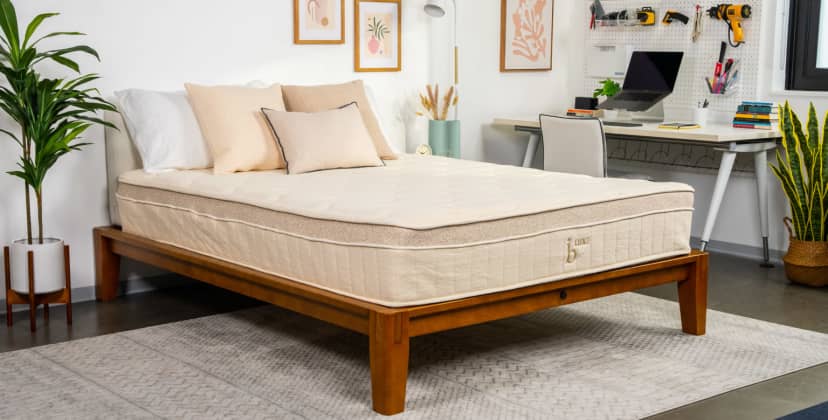
Credit: Sleep Foundation Test Lab
Price
$2,099
Mattress Type
Latex Hybrid
Firmness Options
Medium Firm (6)
Trial Period
120 nights (30-night requirement)
At a Glance
- Who It’s Best For: People over 130 pounds.
- Feel: Buoyant and energizing. Responds to movement and cushions the body without compressing significantly. Even sleep surface that’s supportive from edge to edge.
- What It’s Made Of: Organic cotton quilted Euro-top, followed by three layers of organic wool. Next, a layer of ventilated latex and a zoned pocketed coil support core also with wool and rayon.
- What We Don’t Like: Too bouncy for light sleepers. Too firm for sleepers under 130 pounds.
Scoring & Reviews
The following ratings show how suitable this mattress is for different sleeping positions and sleeper weights. These scores are determined by how well the mattress supports and relieves pressure for each sleeper type.
We performed a meta-analysis on 163 validated customer reviews of the Birch Luxe. This is what people who bought the mattress had to say:- Organic and Eco-Friendly: The mattress is appreciated for being made from natural materials, which is a significant plus for environmentally conscious consumers and those sensitive to chemicals.
- Heat Regulation: Several users have noted that the mattress does not retain heat, making for a cooler sleeping experience compared to other brands.
- Motion Isolation: Couples have reported that the mattress does a good job of isolating motion, meaning that partners are not disturbed by each other’s movements during the night.
- Heavy and Difficult to Set Up: Some negative feedback includes the mattress being heavy and difficult to set up, which could be a challenge for some buyers.
- Price: The mattress is more expensive than other options, but many users feel that the quality and comfort justify the cost.
- Customer Service: There are mixed reviews on customer service, with some customers experiencing great service, while others faced challenges, particularly concerning delivery and handling issues.
Best for Spinal Alignment
Saatva Memory Foam Hybrid
9.1 /10
Test Lab Score
$300 off orders of $1,000 or more
$300 off orders of $1,000 or more
Saatva is well-known for crafting high-end mattresses and its Memory Foam Hybrid Mattress is no exception. It got well above-average scores on nearly every kind of test we run and it proved to be comfortable and supportive for most types of sleepers and body weights. It’s a versatile mattress that does a lot quite well.
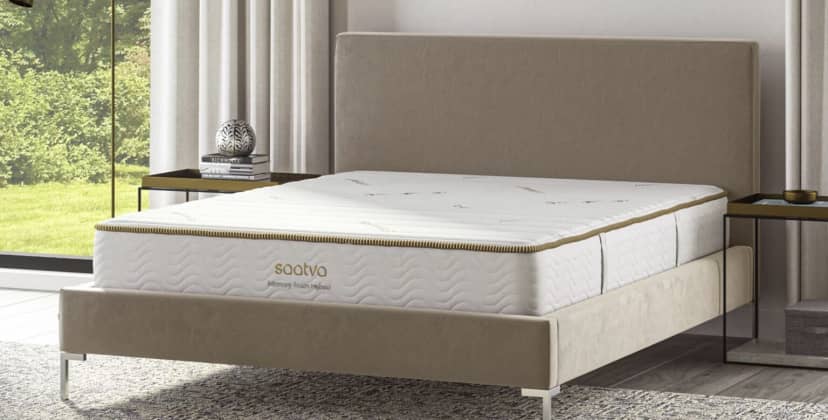
Price
$1,845
Mattress Type
Hybrid
Firmness Options
Medium Firm (6)
Trial Period
365 Nights ($99 Return Fee)
At a Glance
- Who It’s Best For: Sleepers above 130 pounds, side and back sleepers in particular. Also good for those with back or joint pain.
- Feel: “Hugging” sensation without feeling trapped in the bed. Feels cushiony and structured.
- What It’s Made Of: Polyfoam quilted into the organic cotton mattress cover, followed by a memory foam lumbar pad. The comfort system has an additional layer of gel-infused memory foam. The pocketed coil support core features high-quality steel.
- What We Don’t Like: Allows motion to transfer.
Scoring Breakdown
The following ratings show how suitable this mattress is for different sleeping positions and sleeper weights. These scores are determined by how well the mattress supports and relieves pressure for each sleeper type.
We performed a meta-analysis on 186 validated customer reviews of the Saatva Memory Foam Hybrid. This is what people who bought the mattress had to say:- Comfort and Support: Many users report excellent comfort and support while sleeping on the Saatva Memory Foam Hybrid, especially side sleepers and those living with frequent or chronic back pain.
- Product Quality: Saatva has earned a reputation for high-quality mattresses, and according to users, the Memory Foam Hybrid is no exception. People seem particularly impressed with how supportive the mattress feels around their midsection.
- Temperature Regulation: While some users report heat absorption from the comfort layers, most say the Memory Foam Hybrid sleeps at a reasonably low temperature.
- Return and Exchange Policy: Customers are very satisfied with Saatva’s lengthy trial period, and also tout the company for being helpful and responsive when they have questions or concerns.
The Best Deals of the Week
-
Save $166
—
Brooklyn Bedding CopperFlex Memory Foam
$499 (List Price $665) -
Save $480
—
Helix Midnight Luxe
$1,919 (List Price $2,399) -
Save $2,436
—
Nectar Adjustable Bundle
$1,398 (List Price $3,834) -
Save $771
—
WinkBed
$1,799 (List Price $2,570) -
Save $1,020
—
DreamCloud Classic Hybrid
$699 (List Price $1,719)
Best Overall
Luxury Firm WinkBed
9.5 /10
Test Lab Score
Get $300 off all mattresses at Winkbeds
Shop NowZoned support and adaptive foam cushion the body without allowing sinkage.
See More Details
Most Comfortable
Helix Midnight
9.1 /10
Test Lab Score
27% off sitewide with code: SF27
Shop NowAdaptive memory foam and a robust support system keep you comfy as your pregnancy progresses.
See More Details
Best Value
Brooklyn Bedding CopperFlex Memory Foam
8.6 /10
Test Lab Score
30% off sitewide with code: BFRIDAY30
Shop NowAn all-foam mattress that cradles your figure and alleviates pressure without too much sink in the middle.
See More Details

Credit: Sleep Foundation Test Lab
Best for Side Sleepers
Nolah Evolution 15
9.2 /10
Test Lab Score
35% off sitewide + extra $100 off with code: SF100
Shop NowA hybrid with three firmness options that all proved popular with side sleepers.
See More Details
Best for Back Pain
Bear Elite Hybrid
8.5 /10
Test Lab Score
40% sitewide with code: SF40
Shop NowZoned support and pressure-relieving materials combine to keep back pain at bay.
See More Details
Best Mattress + Adjustable Base Combo
Puffy Cloud Smart Bed Set
8.5 /10
Test Lab Score
$750 off + free accessories at Puffy
Shop NowLive your best pregnancy life with an adjustable bed base, pressure-relieving mattress, and a zoned massage function.
See More Details
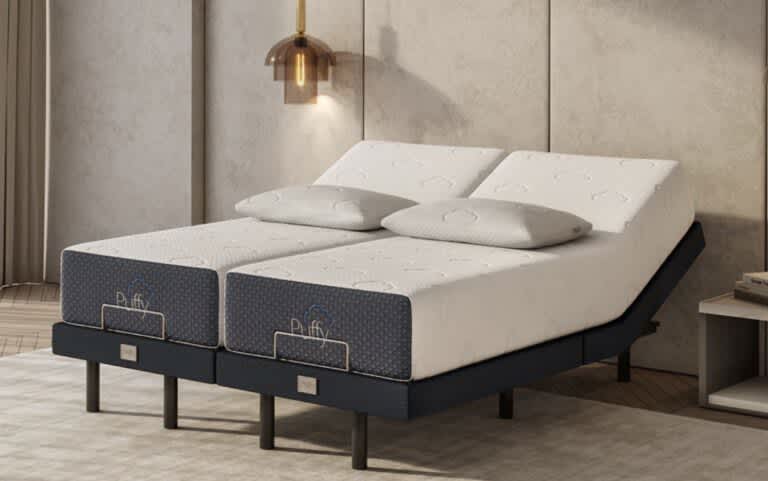
Best Cooling
Brooklyn Bedding Aurora Luxe
9.2 /10
Test Lab Score
30% off sitewide with code: BFRIDAY30
Shop NowTop-notch airflow, patented fibers, and a copper infusion keep this hybrid cool.
See More Details
Best Luxury
Birch Luxe
9.3 /10
Test Lab Score
27% off sitewide with code: SF27
Shop NowOrganic materials and thoughtful details live up to the Birch Luxe’s name.
See More Details
Best for Spinal Alignment
Saatva Memory Foam Hybrid
9.1 /10
Test Lab Score
$300 off orders of $1,000 or more
Shop NowPocketed coils, memory foam, and extra lumbar support boost spinal alignment.
See More Details
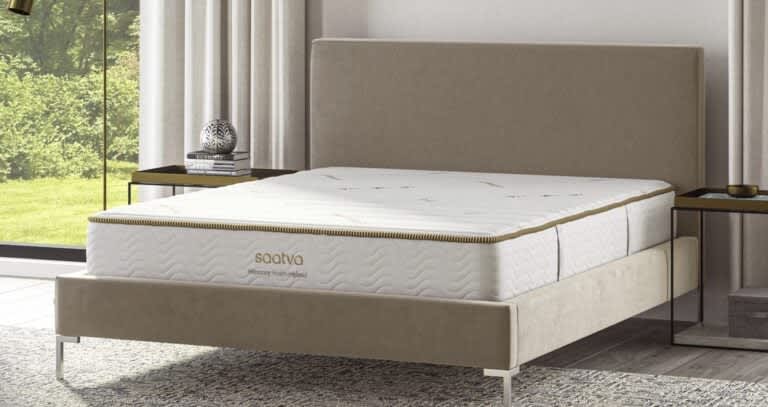
How to Choose the Best Mattress for Pregnancy
When you’re pregnant, each trimester will bring new challenges to your sleep. The first trimester means rising progesterone levels, which result in daytime sleepiness. Some people may also start experiencing tender breasts, nausea, night sweats, and a more frequent need to urinate.
As you move to the second trimester, hormone levels even out. You may feel more energetic, but many people experience nightmares and heartburn.
For most people, the third trimester represents the heaviest blow to their sleep. This is when the weight of the baby bump starts to cause serious lower back pain. In addition, pregnant people commonly experience frequent nighttime awakening, restless legs syndrome, and snoring during the third trimester.
It can be difficult to choose a mattress for pregnancy, given that your body is constantly changing. If you sleep with a partner, you’ll also have to take their concerns into account. Ideally, you’ll find a mattress that suits your regular sleeping style as well, since hopefully you’ll be using your mattress for years to come.
In the following sections, we’ll discuss mattress construction, firmness levels, and how these affect mattress performance for pregnant people. We’ll also discuss why it’s important to get quality sleep during pregnancy, and cover some of the most important things to look for when choosing a mattress for pregnancy.
- Price: Having a child is a big investment, and many expecting couples may not have a few thousand dollars to spend on a new mattress. You’ll have to weigh the benefits of quality sleep against the price, taking into consideration that a mattress should last you at least 6 to 7 years. It’s a common misconception that a high-quality mattress is pricey. While this may be true for some models, there are several inexpensive mattress options that offer the same high-quality materials and strong performance as many of their more expensive counterparts. And most online mattress manufacturers offer payment plans that allow you to pay off your mattress in monthly installments.
- Sleeping position: In the second and third trimester, doctors recommend that pregnant people sleep on their left side, as it’s safest for the baby. Side sleepers often experience added pressure from the hips and shoulders digging into the mattress. Since you won’t be able to change sleeping positions as often as you normally would, the best mattress for the second and third trimesters will be one that provides close contouring and generous pressure relief.
- Mattress type: The type of mattress that’s best for pregnancy — whether innerspring, all-foam, latex, or hybrid — will depend on your body type, preferences, and sleep position. Remember that you’ll be using your mattress after pregnancy, so choose one that suits your regular body type and position preference as well.
- Contouring: Memory foam is the closest-conforming material, forming a “hug” that helps distribute body weight and reduce pressure points when sleeping on your side during pregnancy. Latex also conforms to a certain extent, and many hybrid mattresses use foam or comfort layers that offer a significant level of conforming. Keep in mind people who are allergic to latex should avoid sleeping on a latex mattress.
- Quality materials: The average lifespan of a mattress before it starts developing permanent body indentations or sagging is 6 to 7 years. We’ll break down specific materials below, but denser foams, natural latex, higher coil counts, thicker coil gauges, and other markers of high-quality construction can help guide you toward a more durable mattress.
- Firmness level: Mattress firmness is usually measured on a scale of 1 to 10, with 1 being extremely plush and 10 being extremely firm. But pregnant people will likely find that their firmness preference changes as the pregnancy progresses. You’ll be putting added pressure on your mattress as your baby grows, so you’ll need to have a mattress that continues to provide pressure relief without sagging, which contributes to back pain. Consider a flippable mattress, an airbed with adjustable firmness, or a zoned mattress that’s firmer in strategic areas. Another option is to use a mattress topper for part of your pregnancy.
- Pressure relief: Many pregnant people prefer close-conforming mattresses that provide above-average pressure relief. That said, mattresses that allow too much sink may lead to pressure points due to inadequate spinal support. “With rapidly changing uterine size, body weight, joint laxity and center of gravity, it’s no wonder pressure points change throughout pregnancy,” says Dr. Alyssa Dweck, M.D. FACOG.
- Edge support: A bed with strong edge support can give better leverage when getting in and out of bed, which is important as your belly grows and you find yourself making frequent bathroom visits. Thanks to their coils, hybrid mattresses and innerspring mattresses tend to have the best edge support.
- Temperature regulation: Many pregnant people experience night sweats due to changing hormones. If this sounds like you, look for a mattress with better airflow or more breathable materials to combat overheating. Hybrid and latex mattresses tend to be the most temperature-neutral, although some all-foam mattresses successfully use gel infusions or other techniques to reduce heat retention.
- Noise: Expecting couples need their sleep, so it’s important to choose a quiet mattress that doesn’t squeak and creak every time a person rolls over or gets up. All-foam or latex models make little to no noise, and hybrid mattresses make less noise than traditional innersprings thanks to the individually wrapped coils.
Which Type of Mattress Is Best for Pregnancy?
Mattress types can be broken down into five general categories, each of which has particular advantages and disadvantages.
Hybrid
Definition: To qualify as a hybrid mattress, a mattress must have comfort layers over an innerspring support core, which is usually pocketed coils. The comfort layers can be made of latex, memory foam, polyfoam, micro-coils, wool, down, cotton, or fiber-fill.
Highlight: Hybrid mattresses tend to offer pressure relief and motion isolation rivaling all-foam beds, while the coils provide the increased airflow, reinforced edges, and more robust spinal support of an innerspring mattress.
Innerspring
Definition: Most people grew up with an innerspring mattress, which is mostly made of metal coils and may feature a thin layer of cotton or polyfoam on top. Innerspring mattresses rarely trap heat, and they offer good edge support, but they lack pressure relief and tend to transfer motion to a greater extent.
Highlight: Innerspring mattresses have a bouncy surface and negligible sagging along the edges, making them easy to hop in and out of.
Latex
Definition: All-latex mattresses use latex in the comfort layers as well as the support core. Latex can be either natural or synthetic. Natural latex is breathable, durable, and quite responsive. It contours somewhat to relieve pressure points but can also be made in a firmer version that provides a stable support core.
Highlight: Latex offers pressure relief nearing that of memory foam but without the heat retention.
Airbed
Definition: Airbeds are characterized by the air chambers in their support core, which can be inflated or deflated to adjust the firmness level according to the user’s preference. Most high-end airbeds include additional comfort layers over the air chambers, such as foam or latex.
Highlight: Airbeds sometimes offer as many as 50 different firmness levels that you can adjust as often as you want. This may be ideal as the body’s needs progress throughout pregnancy. For couples sleeping together, it also allows each partner to choose their own firmness level.
Foam
Definition: Polyurethane foam (polyfoam) and its close cousin, memory foam, are synthetic materials that can be engineered to have a variety of characteristics. All-foam mattresses tend to have a high-density polyfoam support core with one or more plusher comfort layers to add pressure relief and prevent motion transfer. Some foam mattresses also include latex.
Highlight: All-foam mattresses, especially those with memory foam comfort layers, contour more closely than any other material to provide relief from pressure points. This can help reduce pain in pregnant people, especially when sleeping on the side.
Why Is Sleep Important for Pregnancy?
Sleep is important for everyone, to be sure, but sleep deprivation during pregnancy has been linked to postpartum depression, preterm delivery, gestational diabetes, fetus size, longer labor, and a higher chance of cesarean delivery. Not to mention the general effects of sleep deprivation, which include slower reaction time, negative mood, and a weakened immune system, among others.
Unfortunately, getting quality sleep when you’re pregnant is easier said than done. Research shows that pregnant people are more likely to suffer from sleep disorders, such as sleep apnea, heartburn, and restless legs syndrome. In addition, pregnant people tend to experience nausea, insomnia, anxiety over childbirth, back pain, fetal movements, and a frequent need to visit the bathroom, all of which can interfere with sleep quality.
Investing in a good mattress is the first step to improving your sleep during pregnancy. For more advice, read our article on how to get better sleep during pregnancy.
How We Test: Your Comfort Is Our Science
Our industry-leading product testing team cares deeply about improving your sleep. Having a holistic understanding of a mattress’s role as part of a sleep system is paramount to our testing process. Since a bed’s comfort and feel depend largely on body weight and sleeping position, our testing team represents a wide range of body types, sleep positions, and comfort preferences.
In our Seattle-based Test Lab, we use an objective, hands-on process to evaluate mattresses across performance categories. The following are the key guidelines that inform our performance ratings. Our ultimate goal is to ensure you have all the information you need to make the best purchase decision for you.
Construction analysis: Mattress construction plays a major role in our ratings system. We begin our testing with a top-to-bottom analysis of each mattress, making note of its materials, firmness, thickness, and other physical attributes. Price-point is another major factor as we assess quality of materials and overall value.
Quantitative product testing: For hands-on testing, our team members take turns lying and moving on each mattress. This immersive process helps us evaluate beds for performance categories like motion isolation, pressure relief, ease of movement, and temperature control.
Field testing: Once we’re finished testing a mattress in our lab, one of our team members takes it home and sleeps on it in their own bedroom for two to three weeks. Field testing helps us understand how each mattress performs in the long term.
User feedback: In addition to our team’s testing data, we draw from customer surveys and product reviews to calculate our final ratings. This helps us ensure our findings are consistent with real-world experiences.
How We Determine Our Overall Scores


To determine a mattress’s overall score, we assign weighted percentages to performance categories based on how important they are to the individual sleep experience. For instance, areas like pressure relief and temperature control tend to matter more to people than something like off-gassing, and because more people sleep on their side and back than on their stomach, we weigh those positions more heavily
Performance Categories
Motion Isolation
This criteria alludes to the amount of motion a mattress absorbs when a sleeper moves on the surface. We use two testers lying side by side to evaluate motion isolation, who each feel for transfer while the other person moves on the mattress.
Temperature Control
To determine how well a mattress regulates temperature, we perform temperature tests and look closely at its materials and construction. Many mattresses are designed with cooling components meant to reduce heat retention.
Pressure Relief
A bed with strong pressure relief excels at preventing pressure from building up in areas like the shoulders and hips. Beds with even contouring and weight distribution are top performers when it comes to pressure relief.
Off-Gassing
A mattress in a box may release unpleasant chemical odors for a short period after you’ve unboxed it. The initial smell may be strong but typically fades within 2 or 3 days.
Ease of Movement
This criteria reflects how easily a sleeper can move across a bed’s surface. Responsive surfaces made of latex typically perform better than foam surfaces, which can inhibit movement.
Edge Support
We perform sit tests along a bed’s perimeter to measure how well the edges push back against weight. Mattresses with strong edge support have minimal sagging when sleepers sit on or lie close to the perimeter.
Dive Deeper – Mattress Guides by Purpose
If you’re still not sure you’ve found a mattress that meets all of your needs, take a look at our recommendations broken down by mattresses that target specific pain points.
Best Mattress by Specific Purpose

Still have questions? Ask our community!
Join our Sleep Care Community — a trusted hub of product specialists, sleep health professionals, and people just like you. Whether you’re searching for the perfect mattress or need expert sleep advice, we’ve got you covered. Get personalized guidance from the experts who know sleep best.

